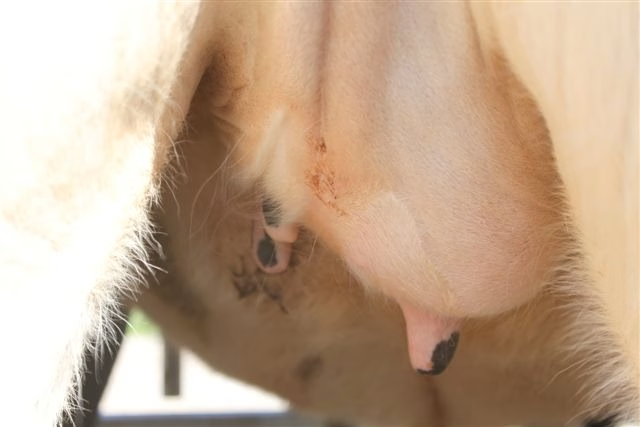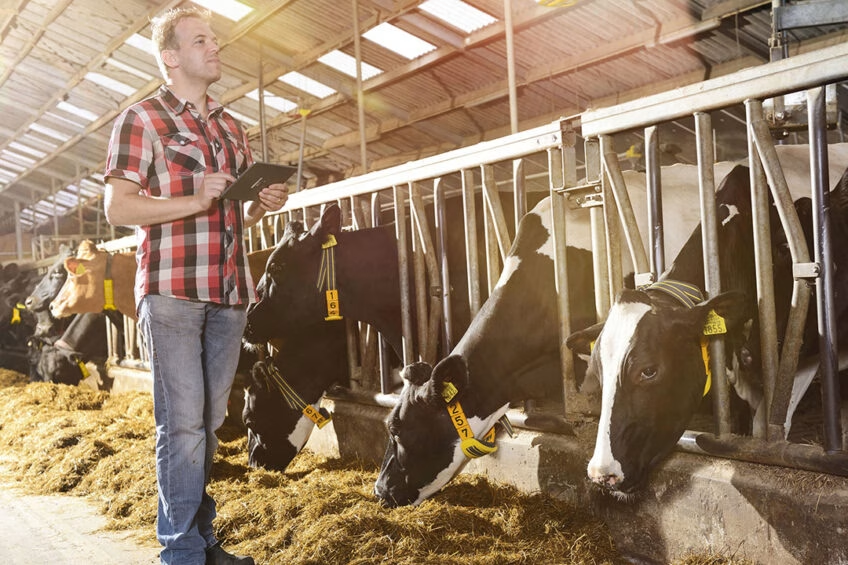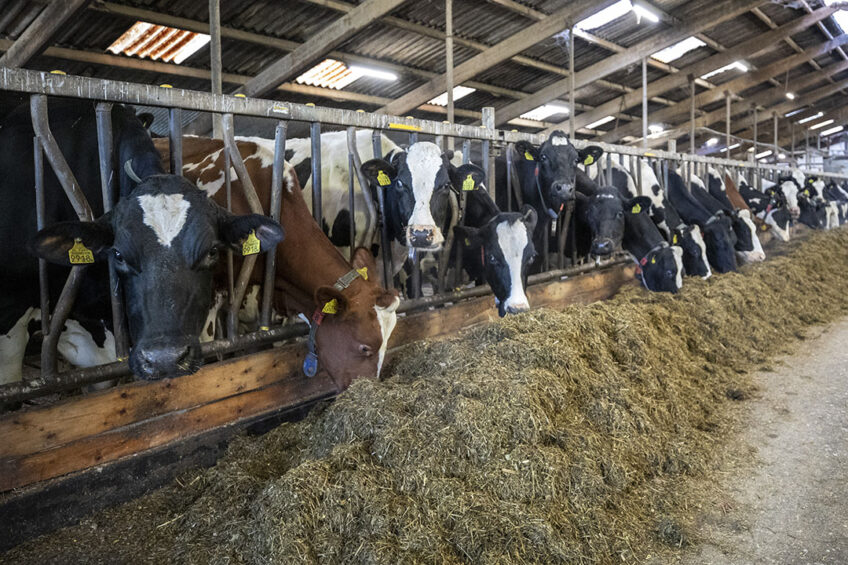Could an HPAI outbreak in California spike milk prices? Be ready for market changes. Learn more now.
Summary: The possibility of highly pathogenic avian influenza (HPAI) striking California’s dairy farms has farmers on edge. Recent spikes in milk and dairy product prices, largely fueled by whispers of HPAI, indicate potentially severe implications for the industry. If confirmed, the virus could worsen the already strained milk production, impacting national cheese and milk powder outputs. California, a key player in the U.S. dairy industry, could see significant disruptions. While the California Department of Food and Agriculture (CDFA) conducts investigations and assures that pasteurization ensures milk safety for consumers, the potential economic impact of HPAI remains a critical concern. Preventative measures include banning the movement of possibly infected dairy animals into the state and collaborating with health professionals to monitor and manage the virus.
- HPAI potential in California dairy farms fuels price spikes in milk and dairy products.
- Virus confirmation might worsen milk production and affect national cheese and milk powder supplies.
- California’s significant role in the U.S. dairy industry could lead to widespread disruptions.
- CDFA assures pasteurization guarantees consumer safety for milk despite virus concerns.
- Economic impacts are a major concern if HPAI is confirmed in California dairies.
- Preventative measures include halting movement of possibly infected dairy animals and enhanced virus monitoring.

With the threat of highly pathogenic avian influenza (HPAI) looming over California, the dairy industry is on high alert. Reports of a significant increase in ill cows among some dairy farmers have raised concerns about the potential spread of this dangerous virus. While HPAI has not been confirmed in California, the mere suspicion has already led to a surge in milk and dairy product prices. The possibility of a large-scale epidemic in California’s dairy sector could disrupt the entire U.S. dairy market, underlining the gravity of the situation.
Highly Pathogenic Avian Influenza (HPAI) is a severe strain of avian flu that may potentially infect dairy cattle. Symptoms include coughing, nasal discharge, swelling joints, and decreased milk production, which may potentially be fatal. The virus is disseminated by contact with infected animals, their fluids, and contaminated equipment. An HPAI epidemic may lead to decreased milk supply, animal loss, and higher expenditures for containment and treatment. It can also raise milk and dairy product prices, causing economic pressure for producers.
California Dairy Farmers on High Alert: Is HPAI the Culprit Behind Sick Cows?
California’s dairy producers are on high alert after recent reports of an unprecedented increase of ill cows in their herds. These findings have sparked concern, with many believing that highly pathogenic avian influenza (HPAI) is at play. The California Department of Food and Agriculture (CDFA) promptly responded.
The CDFA is heavily engaged in examining these instances. They’ve begun analyzing samples from three dairy farms in the Central Valley, a region critical to the state’s milk supply. These samples were forwarded to the California Animal Health and Food Safety (CAHFS) lab for preliminary examination. If the tests are positive, the results will be transmitted to the USDA for confirmation.
The CDFA’s response to the potential threat of HPAI goes beyond testing. They have proactively engaged with private veterinarians, local farmers, ranchers, and state and federal partners to develop comprehensive reaction strategies and maintain active monitoring of livestock and poultry across California. If HPAI is confirmed, the CDFA is prepared to implement swift reaction measures, similar to those used in previous outbreaks, to minimize the impact on the dairy industry.
Preventative measures are also in place. The CDFA has prohibited the entry of potentially infected dairy animals into the state. Furthermore, they collaborate with health professionals to gain a better understanding of the virus’s evolution and support public health initiatives. This proactive and coordinated strategy underscores their commitment to animal welfare and public safety, providing reassurance to the audience.
Market Jitters: Pricing Surge Amidst HPAI Fears
The mere mention of HPAI possibly infiltrating California has sent shockwaves through the dairy industry. But how are these speculations and the likely existence of HPAI influencing milk prices? Let’s dig in.
Fear and uncertainty have resulted in a substantial increase in milk and dairy product costs. This isn’t just a slight change; prices have risen to unprecedented heights as the market prepares for potential disruptions. Spot Cheddar prices rose to their highest levels in 2024 only this week, prompted by concerns over HPAI’s influence on milk supply networks and production quantities.
Let’s delve into the numbers. Current market statistics show that the price of nonfat dry milk (NDM) has reached record highs, driven by a reduction in milk supply and increased market fear. This significant increase in commodity prices, not seen in months, underscores the dairy sector’s deep-seated fear of a potential epidemic in California, the largest milk producer in the country.
Furthermore, the stakes are high since California produces 18% of the nation’s milk and 42% of its NDM. The Golden State also leads Class IV output, accounting for 32% of U.S. butter production and 42% of national nonfat dry milk (NDM) production. These data demonstrate why any possible health catastrophe in California’s dairy industry has far-reaching consequences for the national market. Disruptions in production might lead to a supply deficit, increasing prices and reducing profits for dairy processors and farmers.
The rumor of HPAI has sparked concern about the dairy industry’s vulnerability to health issues, even if it has not been substantiated. As we wait for more solid answers, the market remains tense, with prices reflecting this concern.
So, dairy producers monitor market trends and prepare for any swings. The fallout from these allegations is already being felt, and remaining informed is your most significant protection in navigating these unpredictable times.
Brace For Impact: What Confirmed HPAI Could Mean For California’s Dairy Industry
So, what happens if HPAI is verified in California? You may be asking, “How bad could it get?” Well, the ramifications are tremendous.
- Milk Production Disruption
First and foremost, California is the nation’s leading dairy state. If HPAI spreads here, the effect on milk output might be huge. Fewer healthy cows equals less milk, which might spread to other critical dairy states with HPAI. Consider a domino effect in which productivity decreases across the board. - Ripple Effects on Supply Chains
A decrease in milk production affects more than simply the raw milk supply. The strain affects the whole supply chain. HPAI has already impacted milk input at cheese manufacturers in Idaho and the Central Plains. If California’s milk production is jeopardized, cheese, butter, and milk powder companies around the country would suffer supply problems. - Dairy Product Availability Nationwide
Less raw milk and disturbed supply networks result in lower dairy product availability. Customers may find fewer selections on grocery store shelves, and those that remain may be more expensive. Remember how spot Cheddar and nonfat dry milk (NDM) prices soared to 2024 highs? If California’s output plummets expect even greater hikes.
Although it is not a verified catastrophe, the potential consequences are catastrophic. HPAI on California dairy farms might result in interrupted production, stressed supply systems, and fewer dairy products countrywide. Stay informed, plan your operations, and hope for the best while preparing for all possible outcomes.
Concerned About Milk Safety Amidst HPAI Whispers? Rest Easy
Concerned about the safety of milk and dairy products in light of HPAI whispers? You can rest assured. Pasteurization, a standard practice in dairy production, effectively eliminates the virus. This means that your milk, cheese, and other dairy favorites are safe to consume, providing you with a sense of security and confidence in your consumption choices.
But that is not all. The California Department of Food and Agriculture (CDFA) is wary. They are actively tracking and examining probable HPAI cases. The CDFA works with federal and local authorities, veterinarians, and farmers to manage and reduce outbreaks. Rapid response has been emphasized, ensuring that any positive instances are handled immediately, with samples provided to the USDA for final confirmation.
Rest assured that significant efforts are being implemented to safeguard the dairy sector and consumers.
Expert Voices: Shedding Light on HPAI and Your Dairy Herds
According to Jeremy Luban, a molecular scientist at the University of Massachusetts, “We often see alerts regarding such viruses, but the overlap with dairy farms needs diligent attention.” This viewpoint might help you comprehend the possible hazards around your dairy cattle.
State Veterinarian Annette Jones tells farmers, “Our multi-agency partnership is critical. We have methods to deal with instances like HPAI efficiently, lowering the danger to animals.” Knowing this makes you feel more confident that state officials are on top of the situation.
Peg Coleman, a scientist who formerly worked for the U.S. federal government, raises an important question: “How reliable is the evidence linking avian influenza to food products?” This information may assuage consumer worries about dairy product safety during the epidemic.
The Economic Impact: What Could HPAI Cost You?
Let’s discuss money. If HPAI infects your herd, you will face significant costs. First, consider the expense of veterinarian treatment. Sick cows need extra vet visits, drugs, and sometimes even quarantines. That’s not inexpensive.
Then, think about productivity. Sick cows make less milk. Milk output will decrease, which will have a direct impact on your profits. That is income wasted daily; your herd must perform at full potential.
As if that weren’t enough, consider increasing feed costs. HPAI outbreaks may disrupt supply networks, leading to rising feed prices. Higher feed prices, coupled with reduced milk supply, might result in a financial double whammy.
According to Dairy Herd Management, outbreaks of HPAI in other states have shown how rapidly these expenses may accumulate. For example, the typical price per diseased cow might vary between $500 and $1,000. When you multiply that by the number of your herd, it becomes clear why monitoring is essential.
The financial dangers associated with HPAI are not merely hypothetical; they are real. Keeping an eye on your herd’s health and being proactive may help you save much money.
HPAI H5N1: A Growing Threat to U.S. Dairy Farms and Public Health
The emergence of highly pathogenic avian influenza (HPAI) H5N1 in dairy cattle has raised serious concerns. The first reported occurrence occurred on March 25, 2024, and the virus has since been detected in 192 dairy herds spanning 13 states, including Idaho, Michigan, and Ohio. Four uncommon human cases have also been connected to sick dairy cattle, emphasizing the possibility but low risk of mammal-to-human transfer [CDC].
The FDA and USDA are actively monitoring the issue, creating testing standards, and enforcing biosecurity measures such as heat treatment of milk to reduce hazards. These measures prevent future spread and safeguard public health and the dairy business [USDA APHIS].
Most afflicted states are dairy-producing centers, adding to the urgency. The virus’s presence in these locations might impair milk and cheese production, affecting costs and availability. Public health officials carefully monitor flu-like infections among people who deal closely with affected livestock [FDA].
The Bottom Line
Dr. Annette Jones, the State Veterinarian, emphasizes the necessity and need of monitoring. “While the current risk to the general public remains low, dairy farmers must enhance biosecurity measures and collaborate closely with veterinarians to protect their herds,” the spokesperson said. Dr. Jones recommends remaining informed from credible sources and proactively addressing avian influenza issues in the dairy business.
The essential conclusion is clear: be educated, plan, and collaborate to protect your dairy business.

















